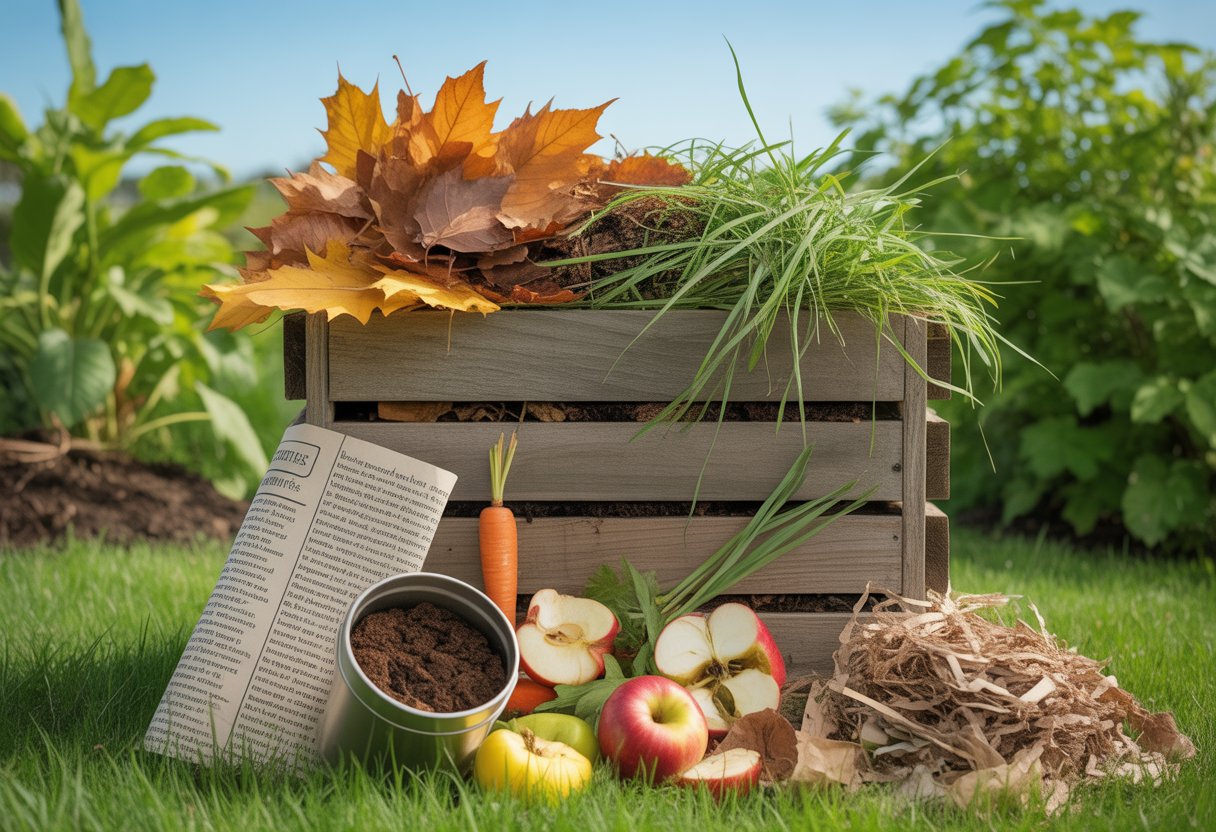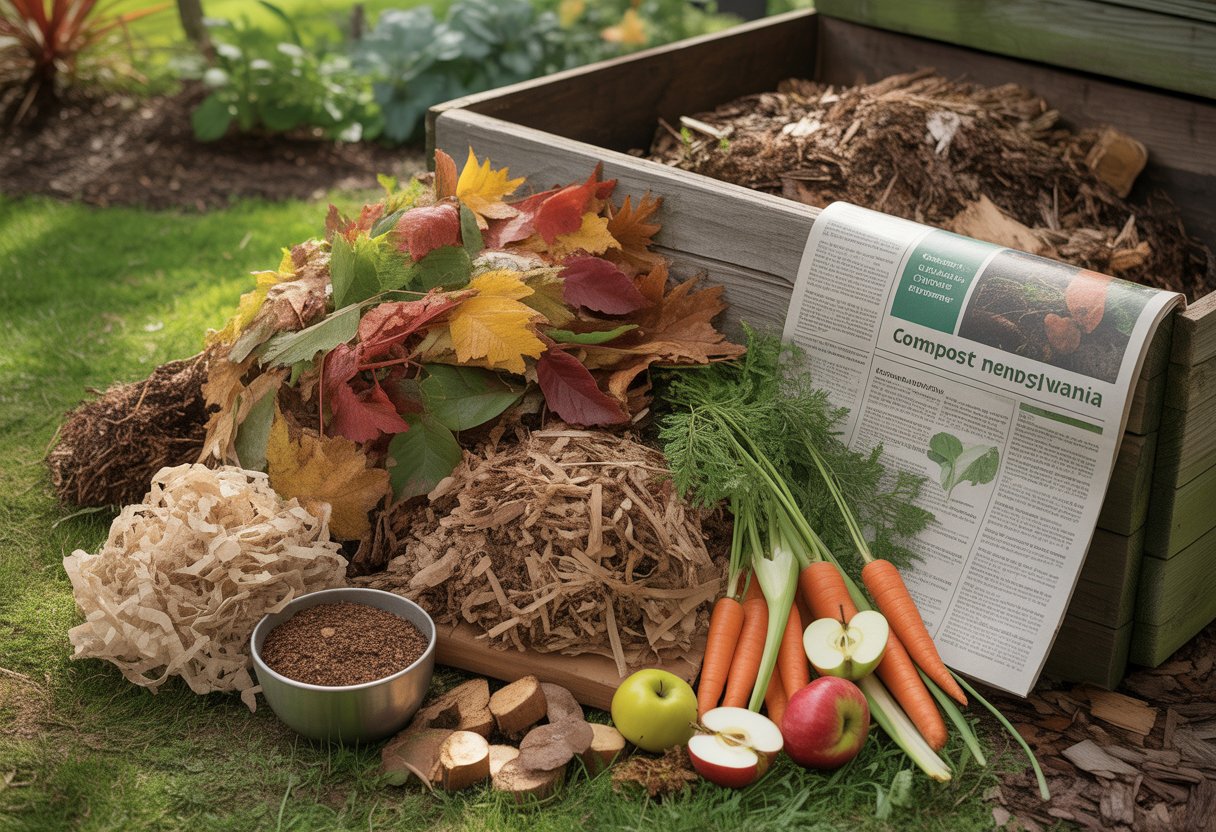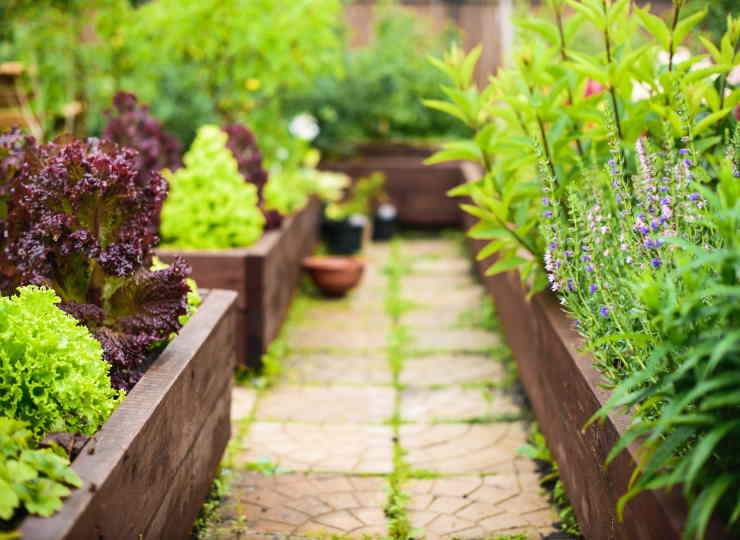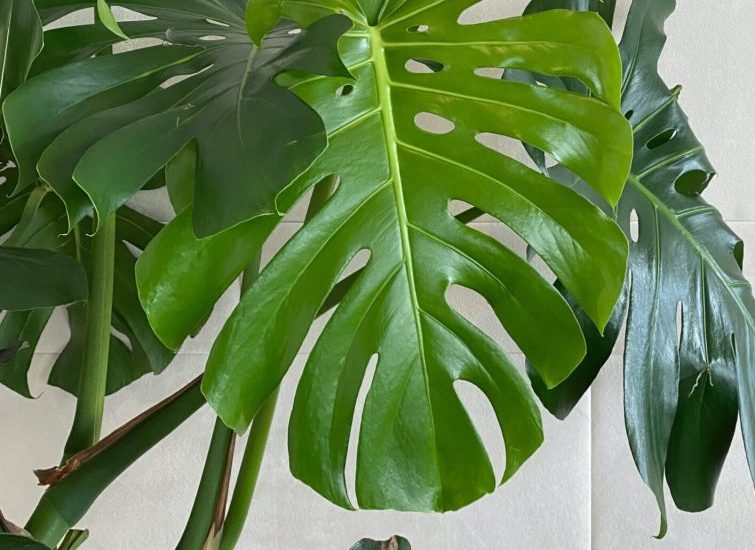Best Compost Materials for Pennsylvania to Maximize Soil Health and Growth
Composting in Pennsylvania really depends on picking materials that work with the state’s climate and soil. The best compost materials for Pennsylvania include a balanced mix of green items like grass clippings and vegetable scraps and brown items such as dry leaves and wood chips.
These ingredients keep the composting process steady and help create nutrient-rich soil.

Pennsylvania’s wild seasonal swings can speed up or slow down composting. Tossing in things like shredded newspaper and coffee grounds helps keep moisture levels decent and adds nitrogen, which microbes love.
Gardeners who use these materials can keep compost working pretty well, no matter the season.
Understanding what’s local and available really matters here. When you use stuff from your own yard or kitchen, you cut down on waste and help out with the bigger picture of sustainable composting in Pennsylvania.
It’s a win for home gardens and even for bigger farm operations.
Key Compost Materials for Pennsylvania

A good Pennsylvania compost pile needs a mix of stuff to deliver nutrients and keep the pile breathing. You’ll want nitrogen-rich “greens,” carbon-heavy “browns,” and a few extras to keep things moist and balanced.
Nitrogen-Rich Ingredients
Nitrogen is what gets the compost microbes moving. Fresh grass clippings, vegetable scraps, coffee grounds, and tea leaves are all solid choices for Pennsylvania composters.
These “greens” break down quickly and give bacteria the protein they need.
Food waste like fruit peels and eggshells bring in more nutrients. Just go easy—too much can get smelly. Eggshells mainly offer calcium, but they help round out the nutrient profile.
Mix these materials well with carbon sources or you’ll end up with a slimy, stinky compost pile. That’s not fun for anyone.
Carbon Sources to Balance Your Pile
Carbon—or “browns”—give microbes energy and keep the pile from getting too dense. In Pennsylvania, dry leaves, shredded paper, sawdust, straw, and wood chips are easy to find.
Fall leaves are everywhere and simple to shred for faster breakdown. Wood chips and twigs add structure but take their sweet time, so chop them small.
Sawdust and shredded paper can get compacted if you overdo it. Mix them with “greens” to keep the pile fluffy and breathing.
Organic Material to Enhance Compost Quality
Flower clippings, mulch, and yard waste add texture and nutrients. These extras keep the compost diverse and microbes happy.
Mulch helps hold moisture, especially when Pennsylvania summers get hot. Yard waste brings in nutrients you won’t get from kitchen scraps alone.
Eggshells and flower petals add calcium and trace minerals, making your finished compost even better for soil and plants.
Compost Materials to Avoid in Pennsylvania

Some stuff just doesn’t belong in a Pennsylvania compost pile. Certain items attract pests, spread disease, or just never break down.
Non-Compostable and Harmful Items
Skip meat, fish, dairy, oils, and grease. They smell awful, draw in rodents, and break down way too slowly.
Pet waste isn’t safe—there’s a real risk of parasites or pathogens. Plastics and anything synthetic just linger forever and mess up your compost.
Leaving these out keeps your compost cleaner and your garden healthier.
Optimizing Compost for Pennsylvania Vegetable Gardens
If you want compost that really helps your Pennsylvania veggie garden, balance matters. The right mix of materials and some seasonal tweaks can make a big difference, especially if you’re tossing in local leaves and yard waste.
Finding the Right Nitrogen-Carbon Balance
A strong compost pile has both nitrogen-rich and carbon-rich ingredients to keep microbial activity humming. In Pennsylvania, you’ll find plenty of nitrogen in vegetable scraps, grass clippings, and garden waste.
Dry leaves, shredded branches, and other yard leftovers bring in the carbon.
Shoot for about 25-30 parts carbon to 1 part nitrogen by weight. Too many leaves or not enough “greens” will slow things down, while too much nitrogen can make the pile smell.
Keep the pile moist and mix it up often. Chopping or shredding materials helps everything break down faster.
Turning the pile regularly keeps it airy and stops it from getting compacted. That way, your compost stays balanced and delivers steady nutrients for your garden.
Seasonal Considerations for Composting
In Pennsylvania, temperature swings really shape how compost breaks down. When winter hits and it’s freezing, microbes slow down a lot.
Spring’s a good time to toss in extra green waste and kick things back into gear. You’ll notice the pile waking up once the weather warms.
Fall drops a mountain of dry leaves—plenty of carbon for the mix. Blend those leaves with kitchen scraps so things don’t get out of whack.
If it’s rainy, try covering your pile with mulch or a tarp. That keeps moisture in check without turning everything soggy.
Summer? The heat speeds things up, but it can dry out your pile fast. I usually turn the compost more often to keep it from getting crispy.
Tweaking what you add each season helps keep your compost humming along. That way, your vegetable garden gets a steady supply of rich compost all year.


